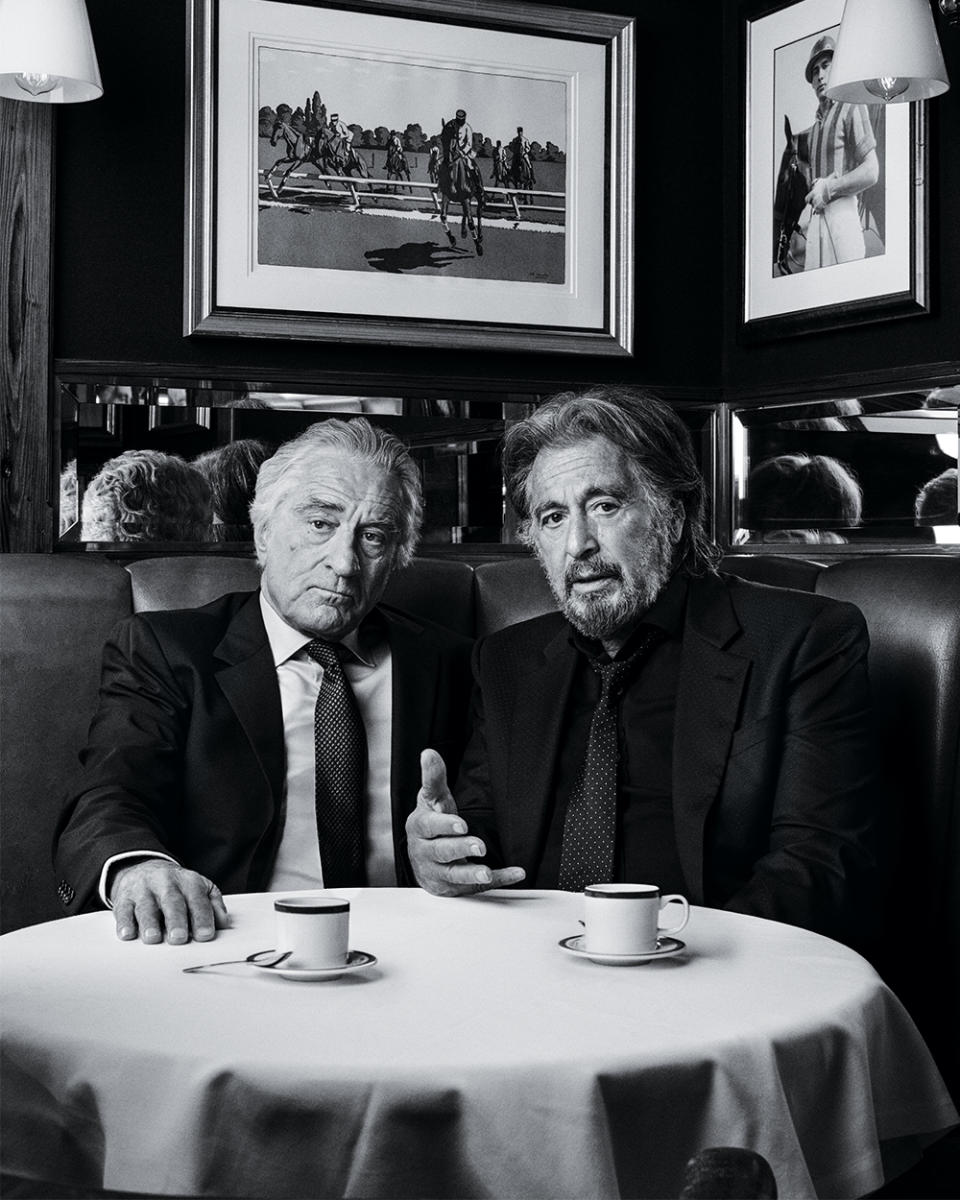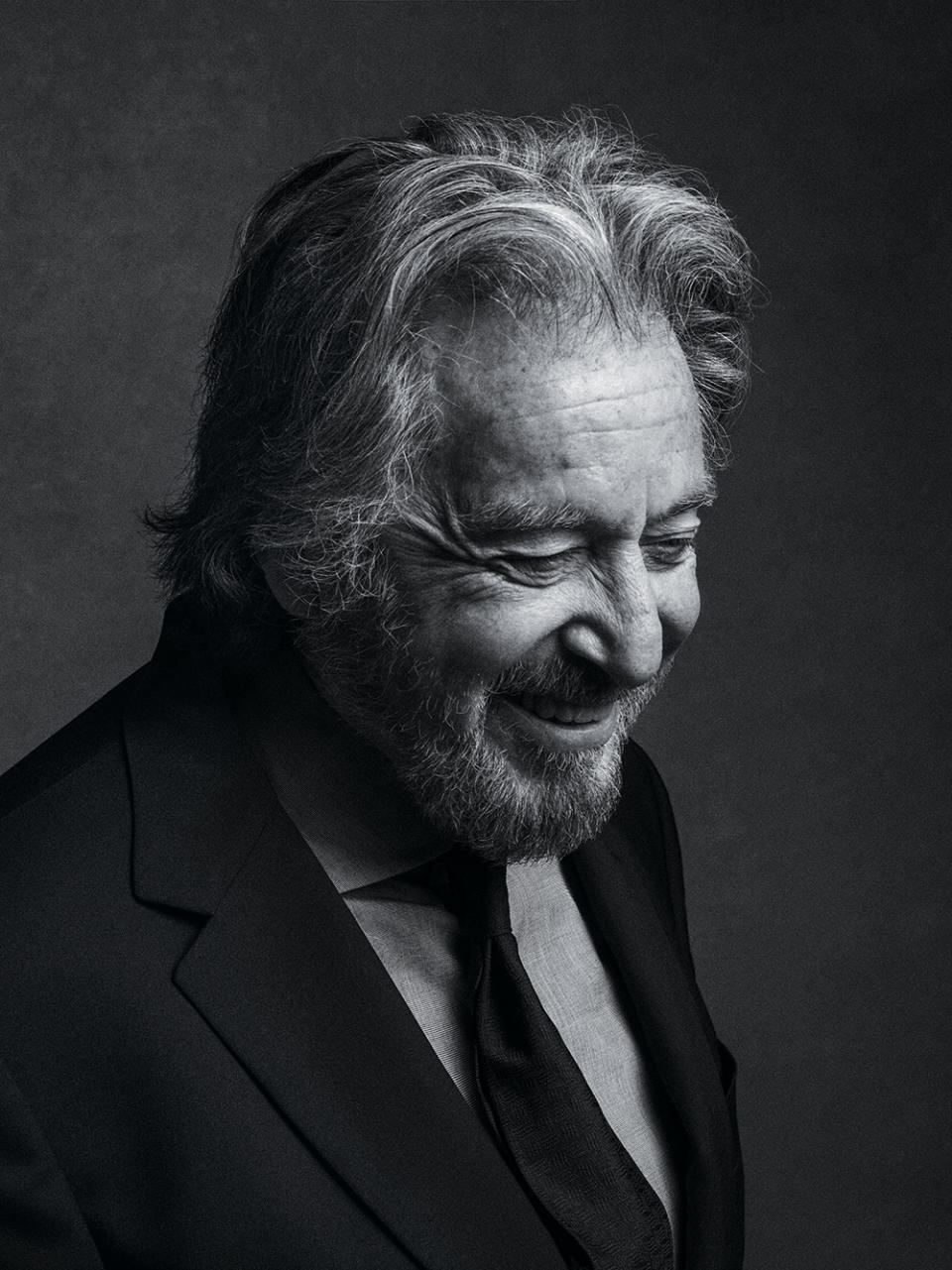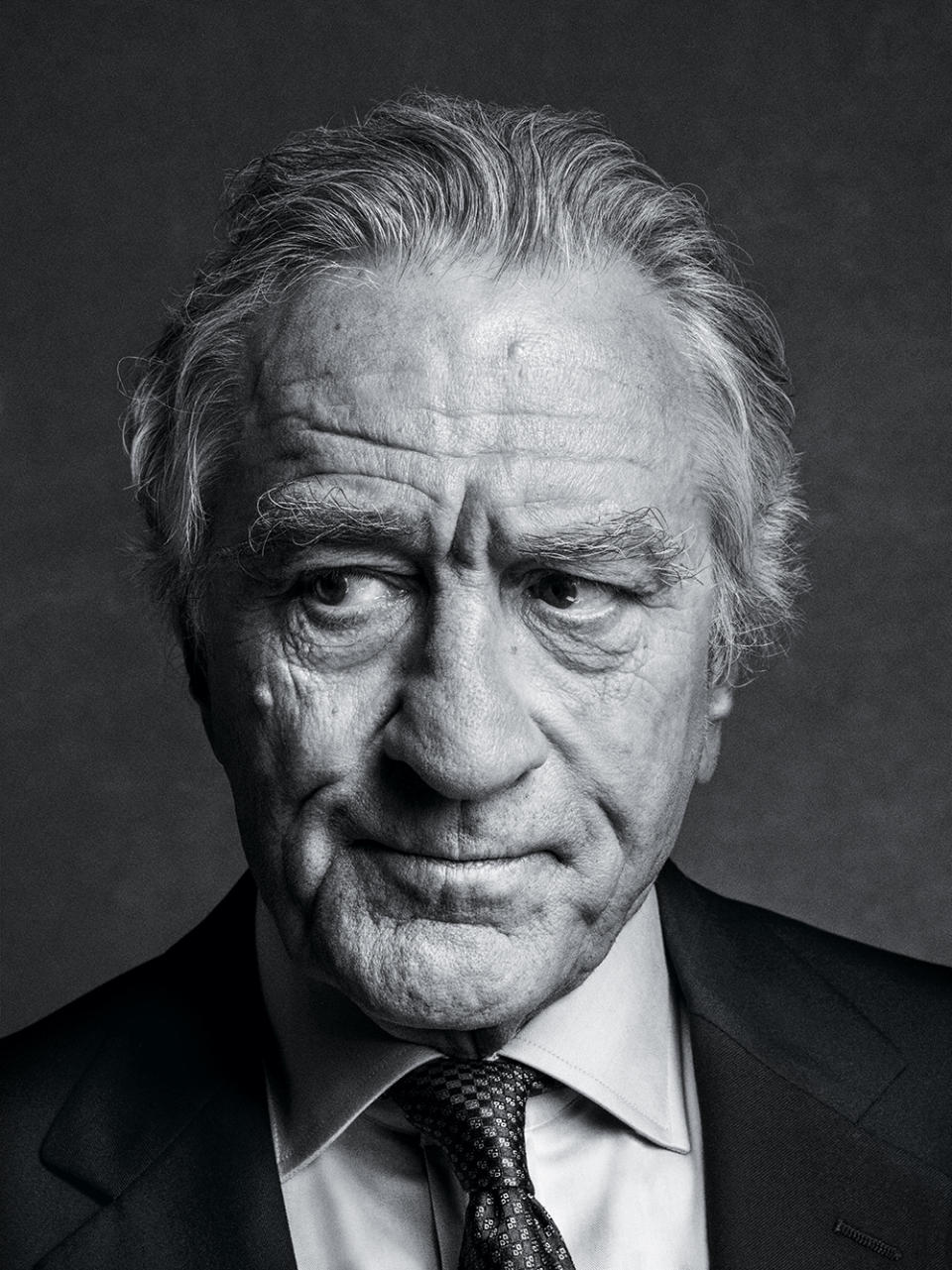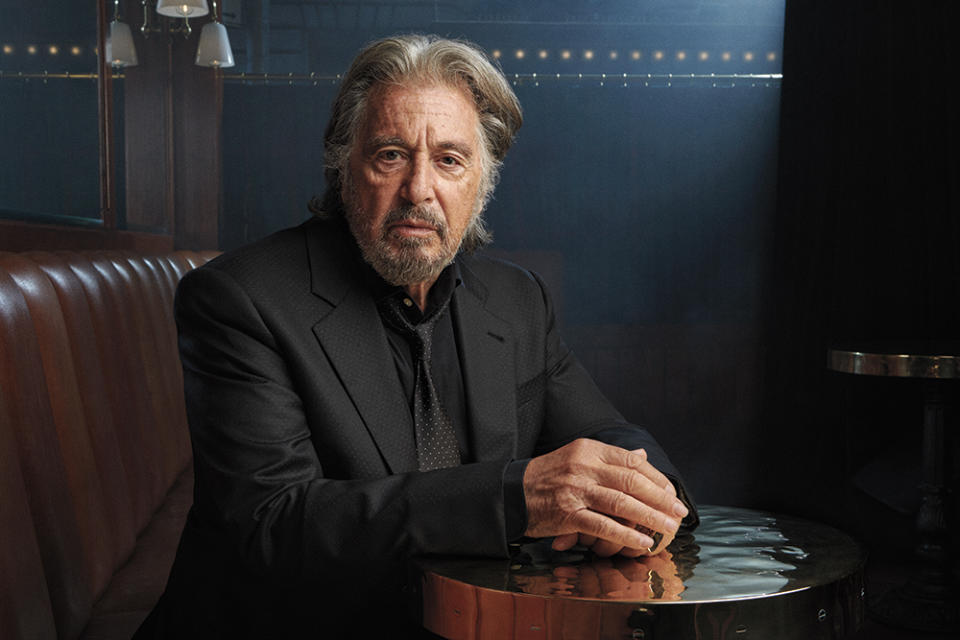Robert De Niro and Al Pacino on Reuniting for Netflix’s Costly Oscar Hopeful ‘The Irishman’

Click here to read the full article.
Robert De Niro felt guilty.
It was the Italian premiere of “Righteous Kill.” The crowds stretched all along the red carpet on a September day in 2008, shouting his name and gripping stills of the actor in hopes of getting his autograph. It was a convulsion of unadulterated fandom, all served up amid a colonnaded public square in a bustling section of Rome. De Niro turned to his co-star, Al Pacino, and expressed regret that all these people were here to celebrate a movie that was little more than a standard-issue cop thriller, one that blistered rather than burnished their legacies. “I said, ‘This is a great reaction, but it would be nice if they were here for a movie that we really feel proud about. Next time we’ll do one we like,’” De Niro recalls telling his fellow actor.
More from Variety
On Sept. 27, at the New York Film Festival, after a tortured gestation that could serve as its own movie plot, the world will get a look at “The Irishman,” the latest collaboration between Oscar winners Pacino and De Niro and a film that deserves a place in their cinematic canon. It’s one of the most highly anticipated movies to come out this fall, in large part because, “Righteous Kill” aside, De Niro and Pacino have an enviable track record of collaborations, one that boasts classics such as “Heat” and “The Godfather Part II.” It also marks director Martin Scorsese’s return to the celluloid world of gangsters, the first time he’s waded into that particular criminal cesspool since winning an Academy Award with 2006’s “The Departed.”
“It’s Bob and Marty in a world they understand, have researched and know better than anybody else,” says Pacino.
As for the film itself, it’s a sprawling, three-and-a-half-hour examination of Frank “The Irishman” Sheeran (De Niro), a mob hit man who became a confidant of Teamsters leader Jimmy Hoffa (Pacino). The movie explores social issues such as the intersection of organized crime and elements of the labor movement, as well as more philosophical concerns. Unsurprisingly, given that its stars and director are all in their mid- to late-70s, it’s a picture that grapples with the concept of legacy, asking penetrating questions about what we leave behind after the screen fades to black. In short, it’s the kind of movie — one centered on terribly flawed people navigating the seedy underbelly of society — that Hollywood doesn’t make anymore. “I Heard You Paint Houses,” the 2004 book that forms the basis for the film, was optioned in 2007, but a rising price tag for the production and scheduling issues involving the in-demand stars and Scorsese meant the start date kept getting pushed back. “I didn’t think it was going to get made,” admits Pacino. “At some point, I sort of thought, ‘Well, that was a good idea, but a lot of those come along and never happen.’”
De Niro first became obsessed with “I Heard You Paint Houses” while doing research for “The Winter of Frankie Machine,” an adaptation of a Don Winslow novel about a Mafia hit man that was originally set up at Paramount. Scorsese was supposed to direct the picture, but De Niro felt that the other book contained worthier subject matter for the longtime creative partners. The director agreed.
“Pretty quickly I started to see the movie in my head,” Scorsese says. “The themes and the questions that have haunted and obsessed me throughout my life were all there. It gave Bob and me the opportunity to pick up the thread from our previous pictures and come together at a very different moment in our lives.”
Produced for a hefty $175 million, much of it spent on de-aging technology that allows the septuagenarian stars to play characters in their mid-20s to 50s, it’s also a movie that fell in and out of the traditional Hollywood studio system, having originally been set up at Paramount and STX. However, in 2017, Paramount grew concerned about the ballooning costs, and after reaching out to Netflix, the streaming service ultimately swept in to foot the bill.
“We needed to make an expensive picture,” says Scorsese. “The movie business is changing hour by hour — not necessarily for the better — and many of the places we would have gone to for funding in the past were no longer viable. Then we started talking to Netflix. We agreed on everything, most importantly that we all wanted to make the same movie. So we went forward.” Emma Tillinger Koskoff, one of the film’s producers, notes that other players seemed reticent to commit to the movie full-bore, perhaps sensing the difficulties it would face in recouping its costs through ticket sales. “In terms of budget and scope, it was much more appetizing to Netflix than to a traditional studio,” she says.
It was a puzzling alliance, uniting Scorsese, one of the most vociferous defenders of the big-screen experience, with Netflix, a streaming service that’s upending the business and a company that’s viewed with nearly existential dread by many exhibitors. Much of the press coverage surrounding “The Irishman” has centered on what kind of theatrical release the film will enjoy. Scorsese pushed Netflix to give the picture as robust a rollout as possible, but there were insurmountable problems. Historically, studios run their movies in theaters for 90 days before debuting them on home entertainment platforms. They traditionally split the profits with the exhibitors. Netflix was willing to keep “The Irishman” in theaters for 45 days before premiering it on its streaming service, according to an insider, and was also open to giving exhibitors up to 75% of the ticket sales. That wasn’t enough to entice major chains such as AMC and Regal. While plans are still being formed, the film will likely be seen in a couple hundred U.S. theaters, venues primarily belonging to smaller circuits such as Landmark and iPic. It will have an exclusive theatrical run of 26 days. The final compromise fell short of what the filmmakers initially envisioned, but for the most part, they’re pleased.

“I wish we could have had 27 days,” jokes De Niro. Jane Rosenthal, his longtime producing partner, is more reserved in her appraisal. “You always wish for more, but we’ll still be in theaters and hopefully adding screens even when we debut on the platform,” she says. “At the end of the day, we just want audiences to see the film.”
Netflix is planning to push “The Irishman” for this year’s Oscar race, and believes the movie is a viable contender not just for best picture but also for Scorsese’s direction and for the performances of De Niro and Pacino. Even if it falls short of its awards ambitions, the movie has already served as a valuable calling card to the industry.
“After we announced the deal, I had so many filmmakers reach out to ask about coming to work with us,” says Scott Stuber, head of Netflix’s feature film division. “We recognize that this is a big conversion for them, but we want to support the greatest filmmakers.”
On a muggy August afternoon, De Niro and Pacino settle into a leather booth in the dining room of The Polo Bar, one of those baronial watering holes with pictures of equestrians on the wall and dark and highly varnished wood running along the ceilings. They’re here to discuss “The Irishman,” which wrapped nearly a year earlier. They are, friends and colleagues say, a study in contrasts. De Niro, taller in person than he appears on screen, is polite but reserved, delivering responses to queries that can veer toward monosyllabism. Pacino, wiry and more animated, is given to long, discursive answers that occasionally get lost in a bramble of remembrances and anecdotes.
“Al is chattier, Bob is quieter, but they’re both really lovely and kind,” says co-star Anna Paquin.
And for the most part, that describes their approach to the hourlong interview. Though there’s one topic that provokes De Niro to almost Jake LaMotta levels of intensity: Donald Trump. He’s particularly exercised about the president’s recent suggestion that Hollywood movies inspire mass shootings (a debate being reignited by the upcoming release of “Joker,” in which De Niro co-stars).

“This is absolute nonsense,” says De Niro, his voice rising as he stabs his finger into the white tablecloth. “It’s bulls—. This guy is afraid to defy the NRA. He calls Washington a swamp because all he knows is a swamp. He’s a classic hustler and a scam artist. He has no morals. No ethics. If people don’t wake up and he gets reelected, it’s going to be very, very bad. Anybody who feels that way should say it. If you wait to say something, before you know it the dictators and despots come to power.”
Pacino, momentarily silenced by De Niro’s passion, doesn’t offer any thoughts on Trump or gun control. He does open up about his decades-long friendship with De Niro, one he says was forged as the two men dealt with the pressures of being hailed as the next great things in film acting in the 1970s.
“We got together at times because there was something we were going through in life that was very similar,” remembers Pacino. “We could share things that were going on and talk about our movies.”
It was Pacino who first blazed into the public consciousness, playing a heroin addict in 1971’s “The Panic in Needle Park,” and then shooting onto the A-list a year later as Michael Corleone, the calculating Mafia don at the center of “The Godfather.” De Niro auditioned for both films, a recurring state of affairs for the two actors.
“Throughout our whole careers, we were always up for the same parts,” says Pacino. De Niro admits that the search for roles, as well as the jockeying for the hearts of critics and audiences, colored their professional relationship at points. “We felt competitive as actors,” he says.
Of course, De Niro would have his own hot streak, winning an Oscar for portraying a younger version of Marlon Brando’s Don Corleone in 1974’s “The Godfather: Part II” and teaming up with Scorsese on an epic three-decade run that included the likes of “Raging Bull,” “Taxi Driver” and “Goodfellas.” Though both men appeared in “The Godfather: Part II,” it wasn’t until “Heat” that they actually shared screen time, uniting for a diner tête-à-tête that’s become the stuff of movie legend. The sequence — one in which De Niro, playing bank robber Neil McCauley, and Pacino, as police Lt. Vincent Hanna, have a tense standoff — is a perfectly choreographed display of movie-star charisma. It’s also one that was shot without extensive rehearsals on the part of the actors.
“Throughout our whole careers, we were always up for the same parts.”
Al Pacino
“We talked about the scene, we analyzed the scene, but we didn’t go too deeply into the scene,” remembers “Heat” director Michael Mann. “I wanted the full immersion to wait until they were in front of the camera. Al, Bob and I wanted to protect that.”
Pacino and De Niro would have liked to share the screen more often and in projects that rise to “Heat’s” level of quality. At one point, the actors planned to collaborate on “Glengarry Glen Ross,” with Pacino playing Ricky Roma, a hotshot real estate agent, and De Niro portraying Shelley Levene, a down-on-his-luck salesman. The film was made in 1992, with Pacino delivering an Oscar-nominated turn, but it was Jack Lemmon who ended up as Levene.
People who have worked with the stars say that they have different styles. De Niro loves to sweat the details, obsessively going over his characters’ wardrobe and burrowing deep into the text of a script. Pacino has a looser style when it comes to shooting scenes — he enjoys, for instance, giving his directors at least one “wild” or go-for-broke take to choose from in the editing room. But directors like Mann say that they have a common value system.
“They both have a commitment first of all to art,” says Mann. “And the more difficult the work is, the more attractive it becomes to them.”
What’s surprising is that despite the two actors’ close association, “The Irishman” marks Pacino’s first time working with De Niro’s frequent collaborator Scorsese. The actor and the director had once discussed teaming up on a biopic about the Italian painter and sculptor Amedeo Modigliani, but somehow that wound up in the “might have been” category. Pacino, who gives his best performance in years as Hoffa, a figure whose ambition and pride set him up for an almost Shakespearean fall, says being directed by Scorsese was worth the wait.
“Marty understands actors, and he gives you a lot of freedom,” says Pacino. “There’s a world that he’s created there, and he keeps you in it. You feel comfortable.”

Film fans are excited about “The Irishman,” because it features a Mount Rushmore of gangster movie greats in Pacino, De Niro, Joe Pesci, Harvey Keitel and Scorsese. But the film won’t just generate headlines because of the stacked deck of talent. One of its most divisive elements will likely be its suggestion that the Mafia played a role in assassinating John F. Kennedy in retaliation for his crackdown on organized crime. Hollywood went down that particular rabbit hole with Oliver Stone’s “JFK,” and many historians and investigative reporters reject those claims as unverified conspiracy theories. De Niro doesn’t sound convinced.
“We don’t know,” he says. “I never felt that the mob had anything to do with the Kennedy assassination, but now, in hindsight, I start thinking maybe there is something more to it.”
Netflix’s line on the issue is more nuanced. “We follow the book’s narrative, but no one is purporting this is the actual truth,” says Stuber. “This is one theory.”
Beyond all things Kennedy, “The Irishman” has already faced criticism about playing fast and loose with the facts. An extensively reported piece on Slate by Bill Tonelli concluded that while Sheeran was a crook who stole from his union members, he wildly exaggerated his role in gangland slayings and was unlikely to have killed Hoffa. Charles Brandt, the book’s author, vigorously disputes Tonelli’s conclusions. He claims the FBI suspected Sheeran was involved in Hoffa’s disappearance and says that he not only confessed to the crime but read the manuscript and recorded a video affirming its accuracy.
“People publicizing their own doubts about Sheeran’s confessions have relied invariably on hearsay and speculation, whereas ‘Houses’ is replete with evidence of the sort that would be admissible in a court of law,” Brandt states.
De Niro hadn’t read the article when he spoke with Variety, but was inclined to believe Sheeran’s account. “I don’t know enough of the history or about all of the theories about why Hoffa was killed or how he was killed,” says De Niro. “For me, the world that Frank Sheeran described to Charlie Brandt seemed very plausible. It might not be what happened, but it certainly seems plausible and well worth telling.”
One aspect of “The Irishman” seems indisputable. It represents an ambitious step forward in visual effects, enabling actors to convincingly portray characters who are roughly half their age. To reassure the filmmaking team that it would work — that wrinkles and liver spots could be wiped away — visual effects firm Industrial Light & Magic had De Niro reenact the Christmas party scene from “Goodfellas.” The filmmakers were astonished by the meticulously re-created sequence, one in which De Niro’s character Jimmy Conway grows exasperated with his fellow mobsters for spending money they stole from a Lufthansa heist. “It was extraordinary,” says Rosenthal. “You put them both side by side, and you could not tell the difference.”
There’s a sadly perverse quality to watching “The Irishman.” Even as you witness De Niro, Pesci and Pacino appearing more youthful and fully in their prime, you are also aware that this is only possible because of digital trickery. That gives the film an added poignancy. “I always thought it should be the three of us,” says De Niro. “We’ll probably never be doing this kind of movie ever again.”

As it barrels through 40 years of history, “The Irishman” often serves as a distillation of the themes Scorsese, De Niro, Pesci and Pacino have explored in their work. It’s a reminder of the immigrant communities who helped build the nation and shape urban life, as well as a sobering portrait of the corrosive effects of power.
It’s a movie that almost seems to be in conversation with “Goodfellas” or “Casino,” reminding audiences of the way that those films provided counternarratives to the more antiseptic version of the American story that’s usually presented in textbooks.
“If Marty and Bob have a brand, it’s these kinds of stories about men from this part of the American culture and from this part of the world,” says Rosenthal. “When you look at this whole group together, it’s cinema history. You look at all of their films together, and this fits right in there.” Scorsese agrees that the film plays as almost the apotheosis of his five decades behind the camera, and reflects the long, distinguished big-screen careers of its stars. “‘The Irishman’ gave us a very rare opportunity for a kind of summation of our life as moviemakers, and we took it,” he says.
For Pacino, it’s not just the movies the group made that loom largest. In fact, for De Niro, one memory remains clearer than all the rest: the two actors’ first meeting. Pacino was walking down 14th Street in the East Village, between Avenues A and B, with his then-girlfriend, the actress Jill Clayburgh. They bumped into De Niro, who had only appeared in a handful of low-budget films but whose reputation was rising in acting circles. The future stretched out before both men, one that would include Travis Bickle and Tony Montana, Rupert Pupkin and Sonny Wortzik, Max Cady and Frank Serpico — performances that changed the course of screen acting with their swagger and emotional volatility. But even then, Pacino knew a star when he saw one.
“There was something about him,” he recalls of De Niro. “He had a certain charisma. He had that look. I thought, ‘That kid’s gonna go far.’”
Sign up for Variety’s Newsletter. For the latest news, follow us on Facebook, Twitter, and Instagram.

